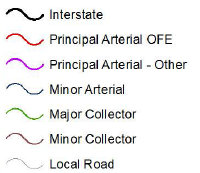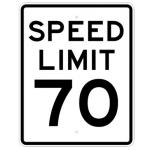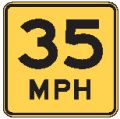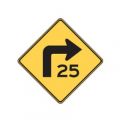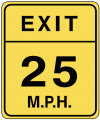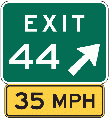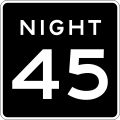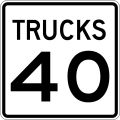Important Note
Massachusetts Functional Classification settings are dictated by the Massachusetts Department of Transportation (MassDOT), at the request of the local jurisdictions, and in coordination with neighboring states. If you do not agree with our FC levels, please petition MassDOT to change the rating they've assigned.
Do NOT make random changes on your own.
Locking Standard
In Massachusetts we have a set minimum standard for locking roads based on segment type. Any road of a certain segment type must be locked at least to the rank (level) in the chart below. Roads may be locked higher for protection and special situations (areas with construction, tricky design, frequent mistakes, imaging inaccuracies, and the like), but should not be locked lower.
A great time to implement these locks is while bringing the road types of an area into compliance with the current US road type standards (FC and highway systems). Lock the roads based on type after they've been set to current US road type standards.
| Segment Type | Statewide |
|---|---|
| Freeway | 5 |
| Ramp | Highest rank of connected segments |
| Major Highway | 4 |
| Minor Highway | 3 |
| Primary Street | 1 (Auto) |
| Street | 1 (Auto) |
| Private Road | 1 (Auto) |
| • • • • Ferry • • • • | 5 |
| |-|-|-|-|-|-|-|-|-| Railroad |-|-|-|-|-|-|-|-|-| | 2 |
Note: Do Not Mass Edit just to update locks to these standards, these can be adjusted as you find them while editing other aspects of the segments such as FC, speed limits, naming, etc.
Some segments still warrant higher locks and care should be taken when setting segment lock to these standards to look for and protect these special setups with higher locks. Some examples; segments which are part of BDP, U-turn prevention, or using micro-doglegs, or other complex intersection setups.
Roadway Naming
Massachusetts follows the US Road Naming conventions for Interstate, US and State routes, with the following considerations.
The naming format for Numbered State Highways in Massachusetts is "SR-###".
State alternate routes have signage of "###A". Do NOT use the style employed for US alternate routes "US-### ALT" when naming state alternate routes. Instead, use Waze names of the form SR-###A. Example: "SR-2A"
Cardinal Direction indicators will be used in accordance with National standards, except in the following situations:
- Undivided US Highway/State Highway
- US Highway with a primary name other than "US-##"
- State Highway with a primary name other than "SR-##"
City Names on Freeway Segments
If a road segment is classified as a Freeway, there shall be No City Names listed, as well as no Alternate Names.
- For the "Mass Turnpike," we add the name "Mass Pike" to the on-ramp name.
City Names on MH/mH Numbered Highways
With the exception of Freeway segments (as mentioned above) all road segments should have a Primary city name assigned to them.
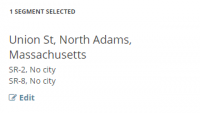
The Primary Street name shall be whatever name is in common usage in that area. (Check business addresses, GIS, etc). If the Primary Name is an actual Street Name (Main St, etc), please add the "SR-##" to the Alternate Name field, with no City name.

However, if the commonly used name is "SR-##" then enter the street name, along with city, in the Alt Name.
If a segment has more than one State/US route number, follow the Concurrent Road Naming guidelines from the Wiki. Just remember, please no city names in the Alt Name field for numbered routes. (see examples on the right)
If a Major/Minor classed segment is not a numbered highway, there should be no alternate names listed.
Clear as mud? Contact the State Manager if you need help figuring this out.
PS and Lower
List the Primary street name, and city. No Alternate names are to be listed.
Named Roadways
These are named highways in Massachusetts which also carry numbered designations. Some are simply names of streets which carry a numbered route(s). Roads named after people/organizations were generally done so ceremoniously, after the numeric designation(s) already existed. Others carry more general names, such as the Southeast Expressway and Central Artery in Boston (which both refer to the same continuous span of I-93).
Several named highways cover the entire length of a given route in Massachusetts; for example, all of Interstate 90 in Massachusetts is the Massachusetts Turnpike, and the entire length of Route 213 is the Loop Connector.(*) denotes that the named highway spans the entire length of the numbered route in the state.
Wikipedia table of Unnumbered, and Named State Routes
Functional Classification
Speed Limits
